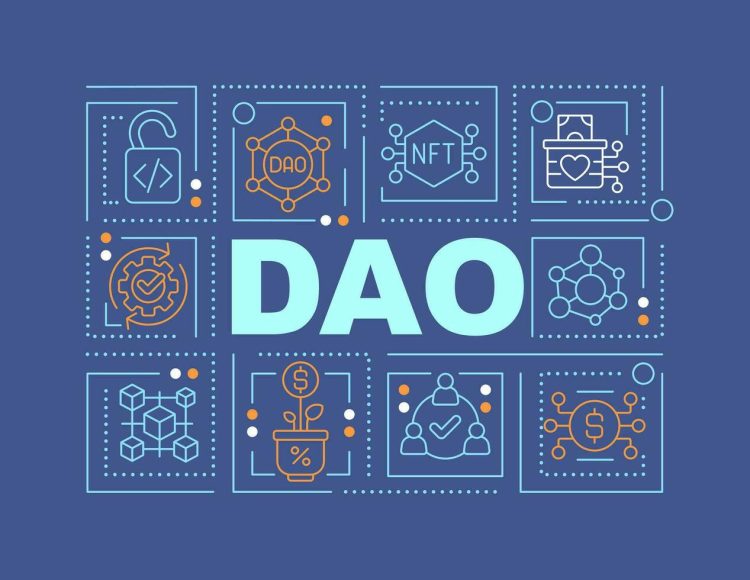Introduction: Governance as the Heartbeat of Decentralization
When Satoshi Nakamoto released Bitcoin in 2009, the vision was simple: a decentralized peer-to-peer system that operated outside centralized control. But even decentralized systems require governance—processes that determine how decisions are made, protocols are upgraded, and disputes are resolved.
From the core developer-led model of Bitcoin to the rise of Decentralized Autonomous Organizations (DAOs) on Ethereum and beyond, governance has become one of the most critical—and contentious—dimensions of blockchain. Unlike traditional corporations, blockchain projects often lack clear hierarchies, making community governance a test of both idealism and practicality.
This article explores how governance has evolved, the strengths and weaknesses of decentralization at scale, and the innovative governance experiments shaping the future of emerging chains.
Bitcoin’s Core Developer Model: Minimalism Meets Stability
A Meritocratic Structure
Bitcoin’s governance is often described as conservative, minimalist, and developer-driven. At its core, decision-making revolves around Bitcoin Core developers, who propose, review, and implement changes. Anyone can contribute code, but only a select group of maintainers have the authority to merge updates into the main repository.
- Consensus via Rough Agreement: Proposals like Bitcoin Improvement Proposals (BIPs) are discussed openly on forums and mailing lists.
- Node Operators as Gatekeepers: Even if developers write code, node operators must choose to adopt it, ensuring decentralization of power.
- Conservatism as a Principle: Major changes, such as block size debates, take years to resolve due to Bitcoin’s culture of caution.
Advantages
- Security First: Bitcoin’s governance prioritizes stability, which is why its codebase remains battle-tested.
- Resistance to Capture: With no central authority, changes require broad consensus.
- Clarity of Mission: Bitcoin’s governance is deeply aligned with its role as “digital gold.”
Limitations
- Slow Innovation: Upgrades like SegWit or Taproot faced long adoption cycles.
- Informal Power Structures: Core developers hold disproportionate influence despite decentralization ideals.
- Scalability Issues: As Bitcoin grows, achieving global consensus without fragmentation becomes harder.
Bitcoin’s model reflects a governance philosophy of “don’t break what works.” While this approach has safeguarded Bitcoin’s dominance, it has also inspired newer projects to experiment with more flexible models.
DAOs: The Governance Revolution on Ethereum
The DAO Origin Story
In 2016, the launch of The DAO—a decentralized venture fund built on Ethereum—was hailed as the future of organizational governance. Token holders could vote on proposals, and smart contracts executed decisions automatically. The project famously collapsed due to a hack, but the concept survived and evolved.
Today, Decentralized Autonomous Organizations (DAOs) are a central feature of Ethereum’s ecosystem and beyond.
How DAOs Work
- Token-Based Governance: Token holders propose and vote on decisions (funding, protocol changes, partnerships).
- Smart Contract Execution: Rules are encoded, reducing reliance on human intermediaries.
- Treasury Control: DAOs collectively manage billions of dollars in crypto assets.
Advantages
- Inclusivity: Anyone with governance tokens can participate.
- Transparency: Proposals and voting records are recorded on-chain.
- Agility: DAOs can adapt quickly compared to Bitcoin’s conservative model.
Challenges
- Whale Domination: Wealth concentration means large token holders can sway decisions.
- Voter Apathy: Participation rates are often low, with a small group driving outcomes.
- Complexity: Governance fatigue emerges when token holders face frequent, highly technical proposals.
DAOs reflect a philosophy of radical experimentation. They aim to make governance more democratic but often trade efficiency and security for inclusivity.
Decentralization at Scale: Pros and Cons
The Promise of Decentralization
Decentralization is the ideological cornerstone of blockchain governance. Its benefits include:
- Censorship Resistance: No central authority can override community will.
- Global Accessibility: Anyone can contribute or vote, regardless of geography.
- Resilience: Distributed decision-making reduces single points of failure.
The Pitfalls
- Coordination Problems: Large, diverse communities struggle to reach consensus quickly.
- Information Asymmetry: Technical decisions often require expertise beyond average token holders.
- Fragmentation: Disagreements can lead to forks, as seen with Bitcoin Cash and Ethereum Classic.
At scale, decentralization is both a strength and a burden. Balancing inclusivity with effectiveness remains the central paradox of blockchain governance.

Governance in Emerging Chains: New Models and Experiments
Polkadot: On-Chain Democracy
Polkadot’s governance is one of the most structured experiments in blockchain. It features:
- Referenda: All token holders can propose and vote on upgrades.
- Council: An elected body represents passive stakeholders.
- Technical Committee: Handles urgent issues requiring fast response.
Polkadot aims to combine decentralization with efficiency, creating a multi-layered governance system.
Tezos: Self-Amending Protocols
Tezos pioneered the idea of on-chain self-amendment. Protocol upgrades are proposed and voted on by token holders, and successful proposals automatically implement. This reduces the risk of forks and creates an evolutionary governance process.
Cosmos: Interchain Governance
Cosmos emphasizes governance across a network of independent yet interconnected chains. Its model reflects the growing need for coordination between blockchains, not just within them.
DeFi Protocols: Micro-Governance
Protocols like MakerDAO, Aave, and Curve function as micro-DAOs, where token holders manage specific parameters (e.g., collateral ratios, fee structures). These models are highly specialized but face challenges of voter concentration.
Comparative Lessons: Old vs. New Governance
- Bitcoin’s Model: Stability > Innovation. Works best for a single-purpose chain with a clear mission.
- DAOs and Emerging Chains: Innovation > Stability. Works best for flexible ecosystems but risks governance inefficiency.
- Hybrid Models: Many new projects seek middle ground—structured on-chain governance combined with off-chain social consensus.
The evolution of governance suggests that no one-size-fits-all model exists. Each blockchain adapts governance based on its goals, user base, and risk tolerance.
The Future of Blockchain Governance
Looking forward, governance is likely to evolve in three major directions:
- AI-Assisted Governance: Using algorithms to surface, prioritize, and even simulate outcomes of governance proposals.
- Reputation-Based Voting: Beyond tokens, governance could incorporate identity, contribution history, or expertise.
- Inter-Chain Governance Frameworks: As blockchains become interoperable, governance will require cross-chain coordination mechanisms.
Governance is not just about efficiency—it’s about legitimacy. The success of future blockchain ecosystems will depend on whether their governance systems are perceived as both fair and functional.
Conclusion: Governance as a Living Experiment
From Bitcoin’s cautious developer-led model to the radical openness of DAOs, blockchain governance has been a living experiment in collective decision-making. The tension between stability and innovation continues to define governance across ecosystems.
Established models teach us that security and trust cannot be compromised, while emerging experiments remind us that community empowerment and adaptability are essential.
The ultimate question is not whether one model will dominate, but how the diversity of governance approaches will shape the future of decentralization. Perhaps the most important lesson is this: governance is not a finished product—it is an evolving process, just like blockchain itself.
So we ask: Will the future of blockchain governance find a balance between Bitcoin’s resilience and DAOs’ inclusivity, or will entirely new models emerge to define the next era?

























